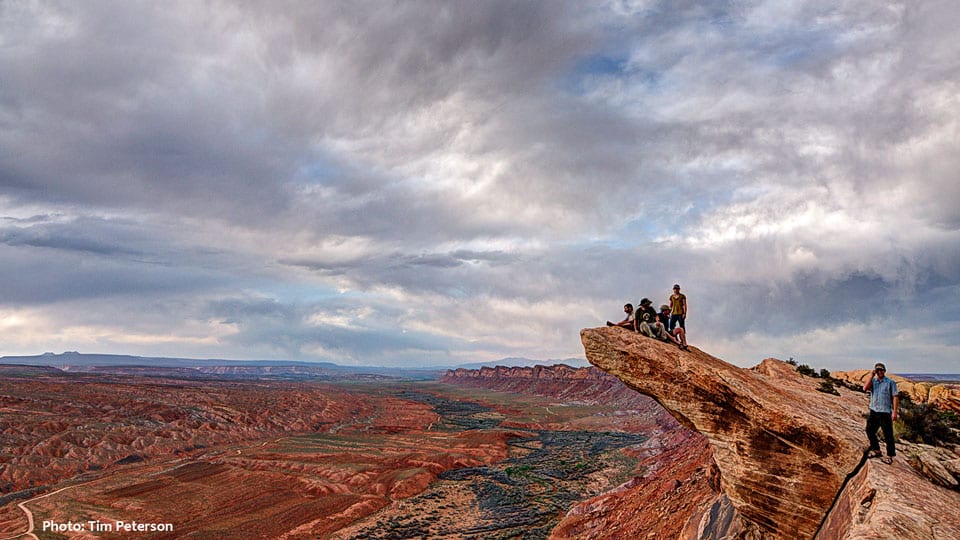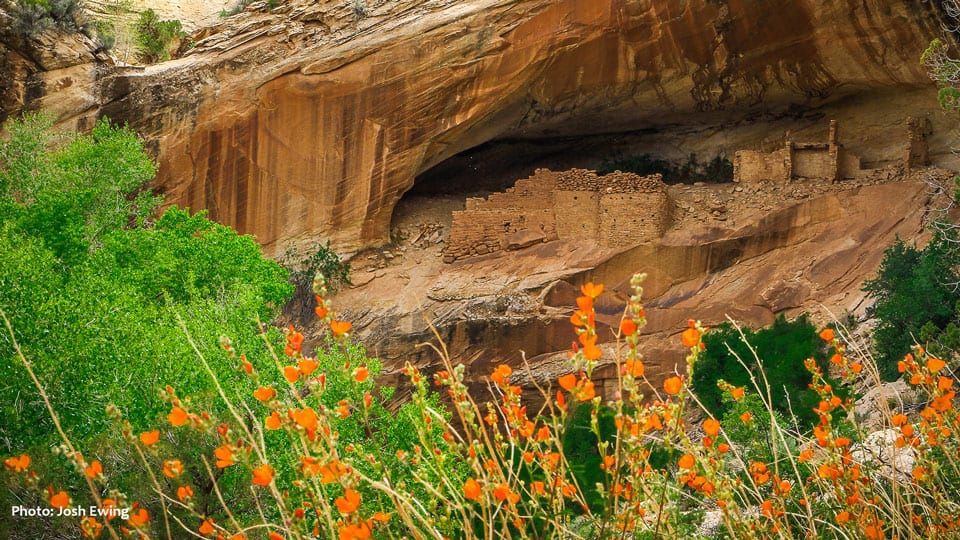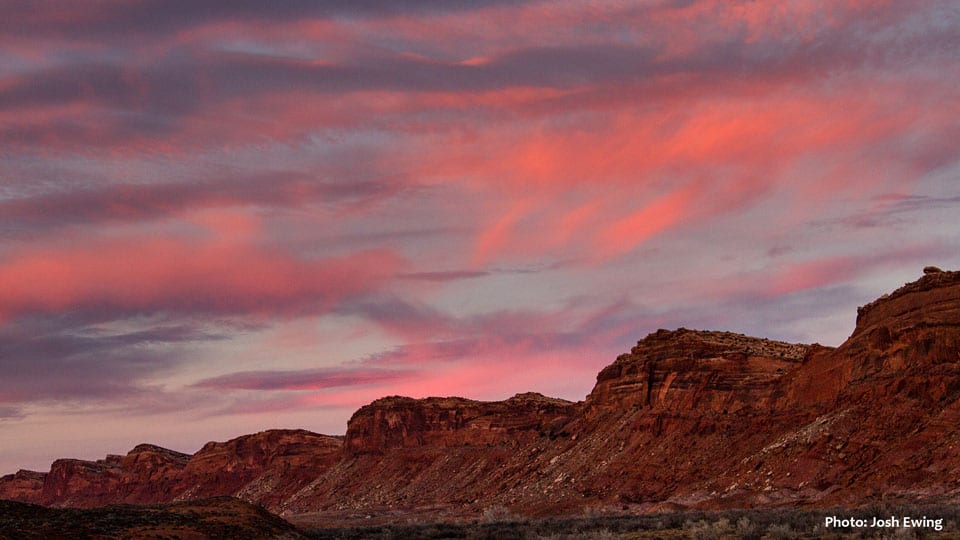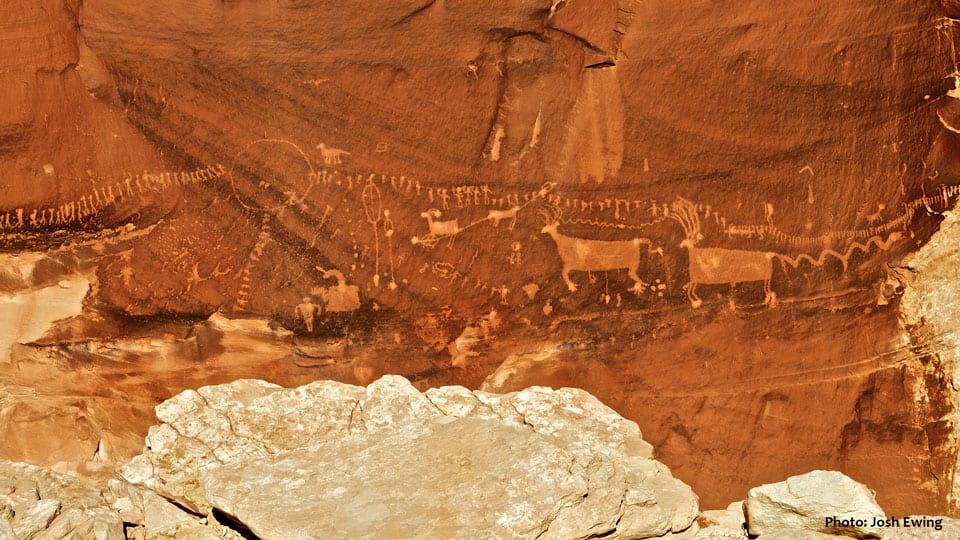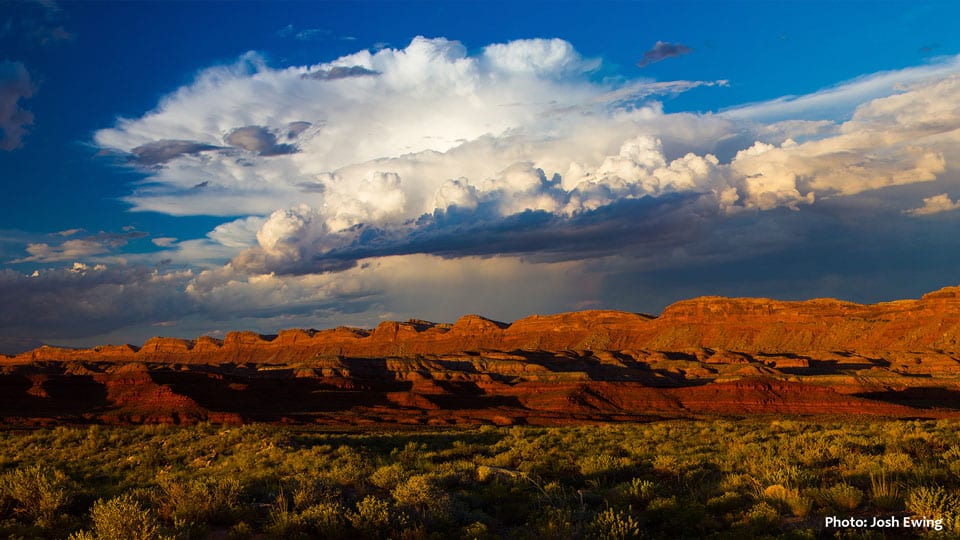omb Ridge is an 80-mile dramatic geologic fold that runs north to south from the Abajo Mountains all the way down to the town of Kayenta on the Navajo Nation in Arizona. Comb Ridge is bordered to the east by Butler Wash and to the west, after a steep drop, by Comb Wash. A significant barrier to east-west travel due to its almost unbroken cliff face, its striking geologic layers hold an interesting paleontological record including dinosaur footprints cast in sandstone and a first-of-its kind dinosaur discovery on the Comb.
The area is home to many cultural sites that tell of its early inhabitants, the Ancestral Puebloans who lived in its alcoves and grew corn in its narrow washes. Recent surveys have found faint traces of prehistoric roads carved through the landscape to connect places of significance to the Ancestral Puebloans. Other research has revealed archaic sites as well as historic sites of early Anglo settlers along the Comb. The 1879-80 Mormon pioneer San Juan expedition saw the Comb as formidable, and only identified a route through the feature at the San Juan River atop a nearby butte they named Salvation Knoll in honor of their sighting of the passage. Butler Wash, just east of the magnificent Comb Ridge, contains outstanding prehistoric rock art and Ancestral Puebloan cliff structures.
Though Comb Ridge is only a mile wide, it offers idyllic vistas and great opportunities for respectful exploration.

